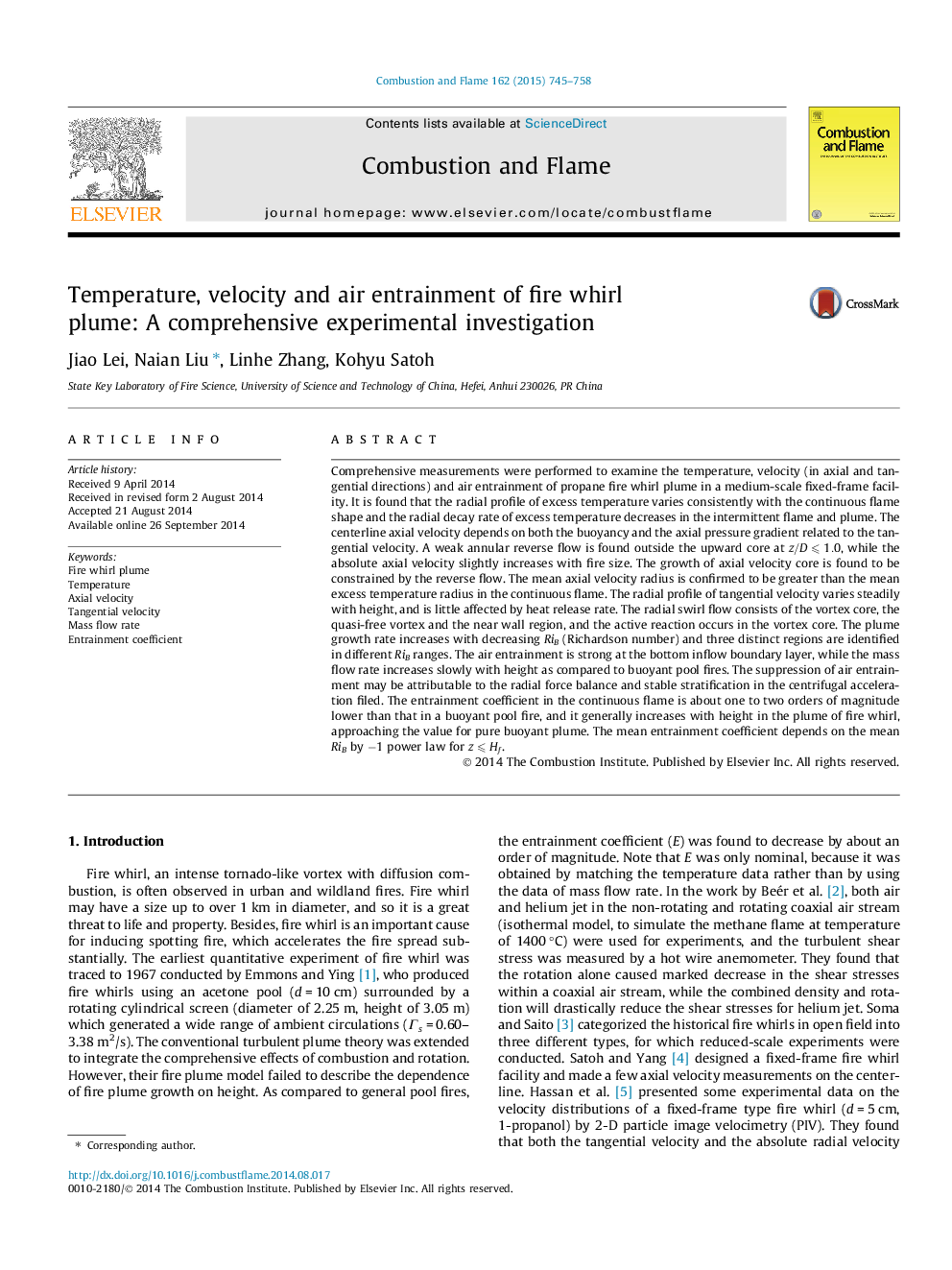| کد مقاله | کد نشریه | سال انتشار | مقاله انگلیسی | نسخه تمام متن |
|---|---|---|---|---|
| 166730 | 457809 | 2015 | 14 صفحه PDF | دانلود رایگان |
Comprehensive measurements were performed to examine the temperature, velocity (in axial and tangential directions) and air entrainment of propane fire whirl plume in a medium-scale fixed-frame facility. It is found that the radial profile of excess temperature varies consistently with the continuous flame shape and the radial decay rate of excess temperature decreases in the intermittent flame and plume. The centerline axial velocity depends on both the buoyancy and the axial pressure gradient related to the tangential velocity. A weak annular reverse flow is found outside the upward core at z/D⩽1.0z/D⩽1.0, while the absolute axial velocity slightly increases with fire size. The growth of axial velocity core is found to be constrained by the reverse flow. The mean axial velocity radius is confirmed to be greater than the mean excess temperature radius in the continuous flame. The radial profile of tangential velocity varies steadily with height, and is little affected by heat release rate. The radial swirl flow consists of the vortex core, the quasi-free vortex and the near wall region, and the active reaction occurs in the vortex core. The plume growth rate increases with decreasing RiB (Richardson number) and three distinct regions are identified in different RiB ranges. The air entrainment is strong at the bottom inflow boundary layer, while the mass flow rate increases slowly with height as compared to buoyant pool fires. The suppression of air entrainment may be attributable to the radial force balance and stable stratification in the centrifugal acceleration filed. The entrainment coefficient in the continuous flame is about one to two orders of magnitude lower than that in a buoyant pool fire, and it generally increases with height in the plume of fire whirl, approaching the value for pure buoyant plume. The mean entrainment coefficient depends on the mean RiB by −1 power law for z⩽Hfz⩽Hf.
Journal: Combustion and Flame - Volume 162, Issue 3, March 2015, Pages 745–758
